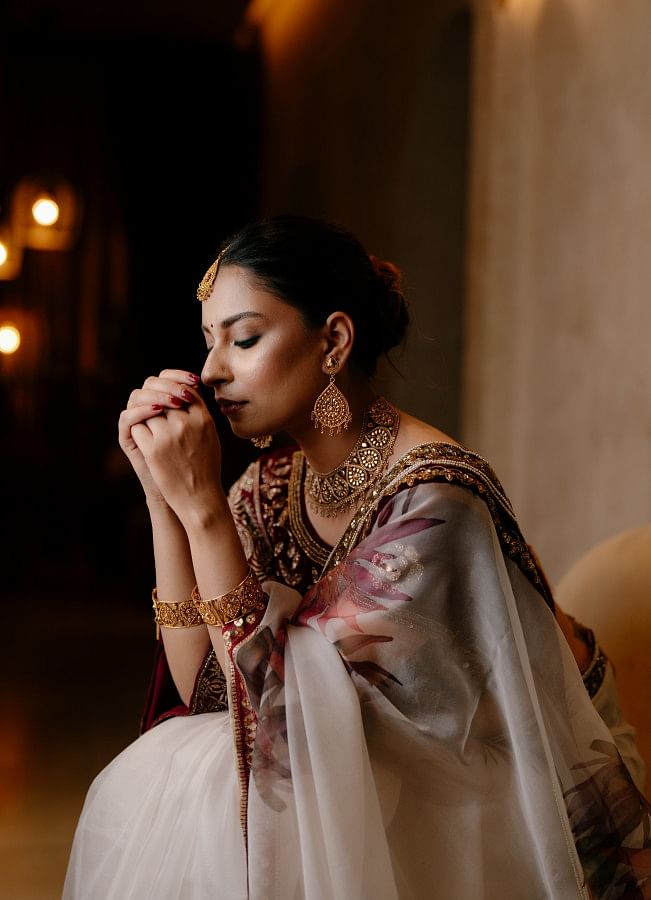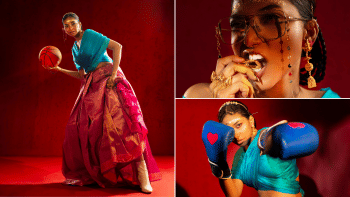As wedding festivities fill the air, sarees become the quintessential choice for those seeking elegance and cultural pride. From the intricate zari work of Benarasi sarees to the ethereal charm of Muslins, these timeless pieces offer a perfect blend of artistry and authenticity for weddings and family gatherings. Yet, to truly appreciate the beauty of these sarees, one must understand the hearts and hands behind their creation.

A designer's perspective: Bringing heritage to the forefront
Safia Sathi, a celebrated Bangladeshi designer working with Benarasi and Muslin sarees, shares her passion for these cultural treasures, "Benarasi and Muslin sarees have been part of our culture for a long time. Our weavers pour their souls into crafting these. So, why wouldn't we wear their work proudly?"
Known for their intricate zari work, luxurious silk, and regal patterns, these sarees are synonymous with elegance. They are not just a favourite among brides but also a go-to for anyone wanting to make a bold fashion statement at weddings.

However, one common misconception about Benarasi sarees is their weight. Sathi clarifies, "People think Benarasi sarees are very heavy but the thread we use is incredibly soft. The zari work, entirely done by hand, is durable and timeless."
The blend of comfort and elegance makes Benarasi sarees a versatile choice for all-day wedding celebrations. This wedding season, Safia has introduced a collection that celebrates both tradition and modernity. Red remains a favourite for Bengali brides, but she also embraces experimentation.
"Red has always been at the heart of Bengali bridal fashion, but my clients are exploring new colours like mustard yellow," she shares.

The artisan's craft: A product of patience
While Safia shares her design philosophy behind Benarasi and Muslin sarees, Md Sobuj — a skilled weaver based in Benaroshi Polli, Mirpur 10 — offers a glimpse into the painstaking process of creating these masterpieces.
"We source pure silk from Rajshahi and threads from abroad, but the saree itself is entirely our creation, hand-loomed with care and precision," he explains. It takes weeks to craft a single Benarasi or Muslin saree. Each piece reflects the artisan's dedication, yet the high cost often deters buyers," Sobuj says.
He adds, "The thread we use is very soft and sustainable but because we can only produce one or two sarees at a time, the cost is higher. Unfortunately, many people do not understand why these sarees are expensive and opt for cheaper, imported alternatives."
This preference for foreign sarees poses a significant challenge for local weavers. Sobuj laments, "People forget the effort and tradition behind our sarees. It's disheartening to see our heritage undervalued."

Why choose local this wedding season?
The wedding season is a time for celebration, but it's also an opportunity to make thoughtful choices that extend beyond fashion. Local sarees like Benarasi and Muslin are not merely garments—they are works of art created by skilled weavers who have inherited techniques passed down through generations.
"The way weavers craft the sarees are extraordinary. They craft unique designs, which are both exclusive and valuable," says Sathi, adding, "Presently, we focus too much on fast fashion and frequently value imported products over our local ones. If this continues, our weavers will lose interest and turn to other professions."
Therefore, every purchase of a Benarasi or Muslin saree is a vote of confidence in local craftsmanship. It helps sustain livelihoods and preserve cultural heritage.
Make a statement with heritage
Think of a wedding or festive gathering. Amidst the sea of synthetic, mass-produced outfits you are making a statement with a Benarasi saree with intricate zari work or a Muslin saree. How wonderful would that be! These sarees are not just clothing – they are heirlooms, laden with stories of generations of artisans.
In an era where global fashion often overshadows local traditions, wearing a saree handwoven in Bangladesh is a bold act of reclaiming identity. It's about saying, "This is who I am, and I am proud of it."
This act of heritage appreciation also counters the growing dominance of fast fashion, which often erases cultural uniqueness. By draping yourself in a Benarasi or Muslin saree, you make a statement that quality, craftsmanship, and cultural pride matter more than fleeting trends.
Photo: Reminiscence Photography
Model: Sunidhi Nayak
Outfit and styling: Safia Sathi
Make-up: Saleha Sarwar (face by Saleha Sarwar)
Jewellery: 6 yards story
Location: Saleha Sarwar studio













Comments